Strengthening understanding of anxiety (assessment) overview
Getting it Right For Every Child Experiencing wellbeing concerns including Anxiety, relies firstly on theses 3 questions in red being fully considered and explored.
- What is getting in the way of this child’s or young person’s well-being?
- Do I have all the information I need to help this child and young person?
- What can I do now to help this child and young person?
- What can my agency do to help this child or young person?
- What additional help, if any, may be needed from others?
- Are this child’s human rights being met?
The effectiveness of any help that the child will be offered will be dependent on good assessment information.
This section outlines a number of frameworks or ‘tools’ to assist assessment. You would not be using all these frameworks at once. In most circumstances one or two will guide your assessment. Where the assessment is more complex or over a longer period of time, you may use many of these to help. These can be used by a single agency (eg. education) working in partnership with parent(s)/carer(s) and the child/young person or a larger team around the child/young person.
More ‘tools’ to support documenting this assessment information are available in the next part of the blog. The recording of the assessment will be enhanced if you use these frameworks to have rich conversations, reflection and analysis.
Frameworks for thinking about anxiety
Low to moderate anxiety
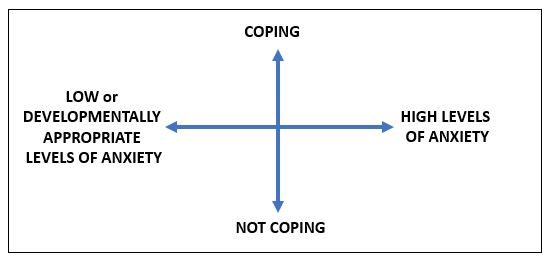
For the majority of children and young people, their anxiety will be low to moderate. The adults around them will be able to assist them and enhance their coping skills and address unmet needs to ensure they can manage their anxiety and either reduce or remove the impact anxiety if having on their life. These children and young people will not require specialist assistance.
Wellbeing
The adults and the child/young person should explore the strengths and positives about the child/young person’s development as well as their wellbeing or development needs across all of the wellbeing (SHANARRI) indicators. This provides detailed and deeper understanding of the child/young person at a specific point in time. This can be used to signpost areas for support as well as a baseline or ongoing assessment tool.
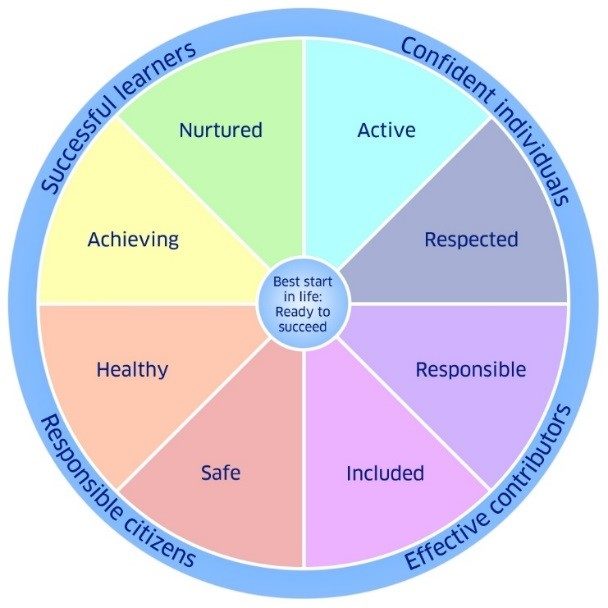
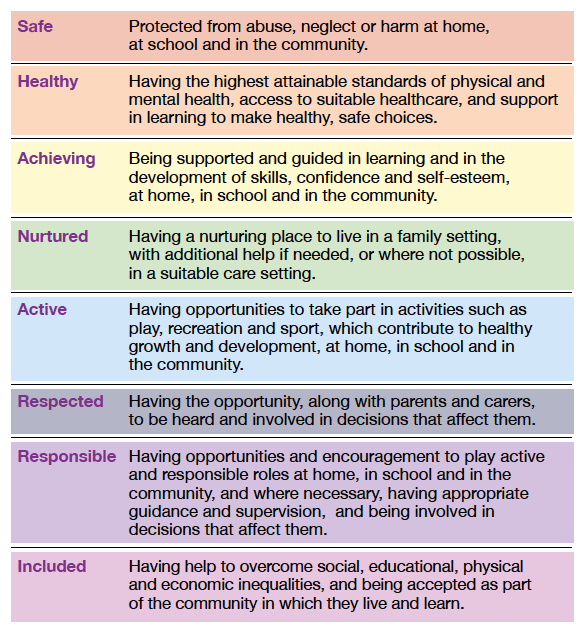
There are many methods of gathering views from children and young people. The wellbeing wheel is one tool.
Practitioners should
- build all children’s knowledge of the wellbeing indicators
- uphold children and families rights to have their views heard and respected
The tools for assessment section contains prompts for use of the wellbeing indicators.
Ecological Model
This model reminds us that children and young people are influenced by everything around them. We should consider the child in the context of the different aspects of the child’s environment that can influence their development.
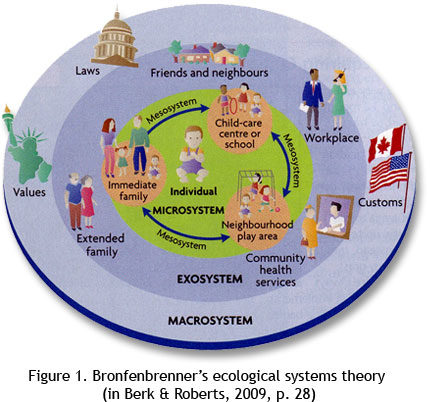
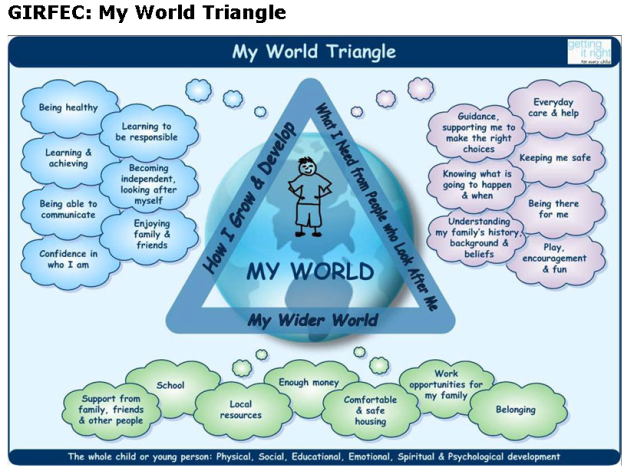
Consider the different aspects of your school which influence the children. Which areas are you already promoting positive messages about mental health? What areas can you enhance and incorporate more messages about positive mental health: your assemblies, staff CPD, policies, lessons? It’s also important to be mindful of the other aspects in a child’s life which can interact with school and influence their mental health and wellbeing e.g. home. How curious have you been in understanding the child/young person’s life beyond school? Are there resources that you are using in school which you can share with home?
The tools for assessment section contains prompts for use of the My World assessment.
Resilience
Although many factors can be associated with resilience, there appear to be three fundamental building blocks that underpin a resilient child.
- A secure base and sound attachments with carers providing the child with a sense of belonging and of security.
- Good self–esteem providing a sense of self–worth and of competence.
- Self–efficacy or a sense of mastery and control, along with an understanding of personal strengths and limitations.
Alternatively, these can be expressed as:
SECURITY I have …..a secure base, I have ……friendships
SELF-EFFICACY I can ……education, I can ……talents and interests
SELF-ESTEEM I am …….positive values, I am …….social competencies
Daniel and Wassell (2002) have developed these three building blocks into a framework with six domains of resilience to assist practitioners in assessment and planning to strengthen these building blocks.
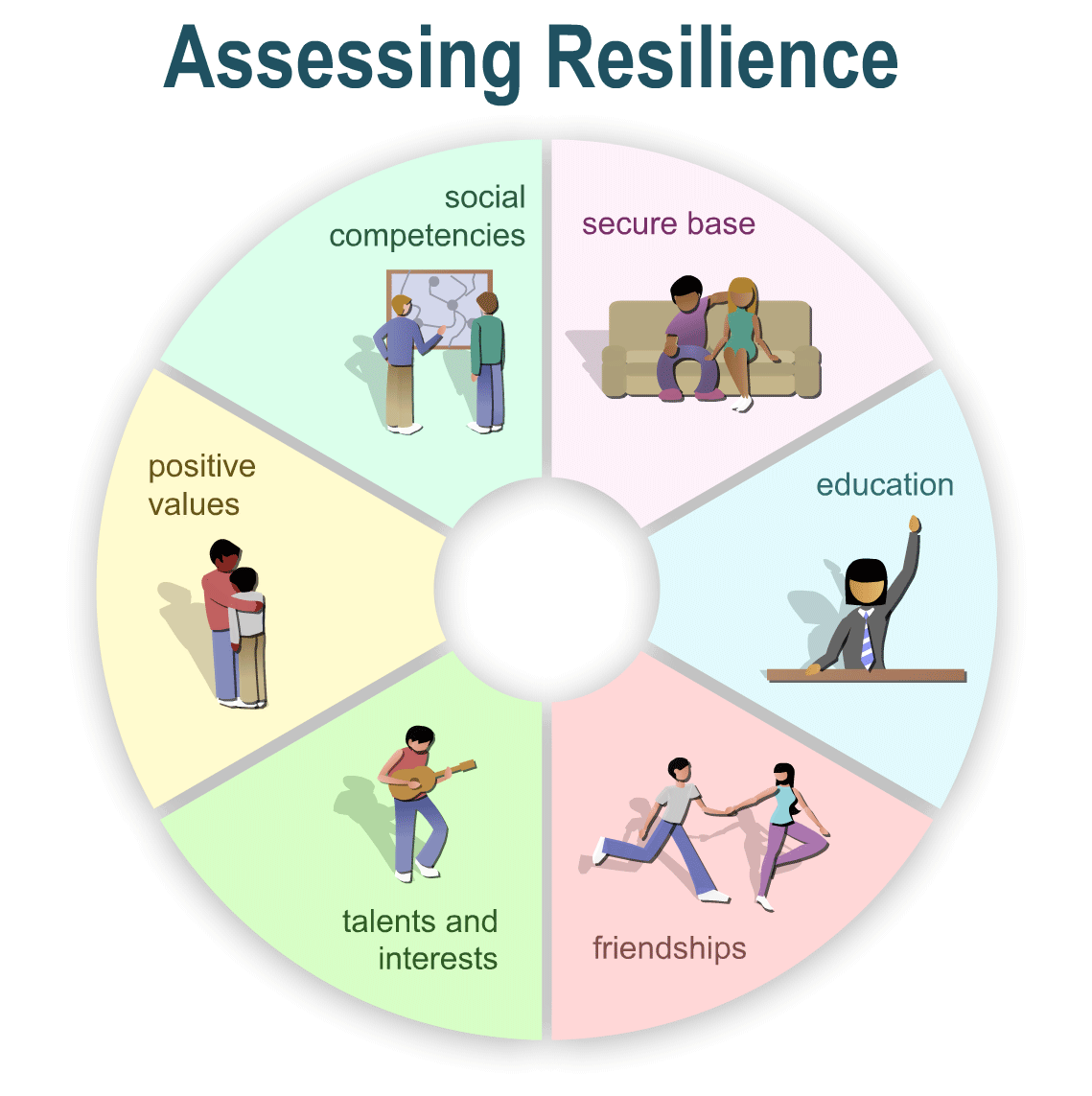
Factors within each of these domains of a child’s life are known to contribute to a child’s level of resilience to adversity such as abuse, neglect and loss.
Investing in each of these domains is protective and preventative in wellbeing needs arising or being sustained.
Where wellbeing needs exist, we should understand which or the six domains are already strong for the child and what domains need to be strengthened.
A short animation is available: https://content.iriss.org.uk/fosteringresilience/assessing.html
The tools for assessment section contains key assessment questions for each of the six domains.
Additional Support Needs
‘Additional support needs’ is a broad and inclusive term that applies to children or young people who, for whatever reason, require additional support, in the long or short term, in order to help them make the most of their school education and to be included fully in their learning.
In considering any concerns for a child’s wellbeing or mental health such as anxiety, it is critical that all of the additional support needs the child has are understood. These may be additional support needs that are likely to be short/medium term or enduring/life-long.
Unmet additional support needs may give rise to anxiety and effectively understanding and providing support for those additional support needs is likely to be critical in reducing or removing the anxiety being experienced by the child/young person.
A range of resources for understanding and responding to a wide range of additional support needs are available via the Educational Psychology Service website (eg. Resources).
Effective processes consistent with the Getting it Right For Every Child should be followed where either single agency assessment or integrated (multi-agency) team around the child assessment is undertaken using the frameworks and approaches provided in this blog and any other frameworks/policies that helps to gather the information required to more fully understand the range of needs that are known to or may be impacting on their development.
Risk, resilience and trauma-informed thinking
A short animation (South Lanarkshire Council, 2016) about the resilience matrix
Focusing on strengthening protective factors AND attending to risk exposure is required.
It is the balance of these factors and their interaction that will determine positive or negative child outcomes.
- Vulnerability: a feature that renders a person more susceptible to a threat.
- Resilience: positive adaptation in the face of severe adversities.
- Protective factors: the circumstances that moderate the effects of risk.
- Risk/adversity: any factor or combination of factors that increases the chance of an undesirable outcome affecting a person.
Risk factors can be individual, family, community…e.g. low self-esteem, poor social skills, health needs, bereavement, parent ill health, abuse, neglect, poverty, discrimination, homelessness, violence
Chronic minor events can be more damaging than acute major events. Risks are cumulative rather than additive – no child, no matter how resilient, will be impervious to the effects of extreme and prolonged risk (Chicchetti and Rogosch, 1997). Hence interventions to promote resilience cannot completely eradicate negative outcomes when risks are severe.
The child/young person’s chronology is not an assessment but will inform analysis of all the assessment information available. The chronology is key to helping to:
- identify at a glance the major changes and significant events in a child’s and/or their family life
- identify at a glance the balance of positive and negative events and any patterns of events experienced by a child and their family
- understand a family or carer’s potential to support needs or progress with minimal intervention
- recognise cumulative evidence of emerging needs and risk and highlighting when a different response might be necessary
Chronology PowToon (Falkirk Council, 2018)
Moderate to high anxiety
 A small number of children who are experiencing moderate to high mental health difficulties, including anxiety, may require the more specialist services of the CAMHS. See CAMHS webpage for professionals, children, young people and parents/carers also CAMHS: national service specification
A small number of children who are experiencing moderate to high mental health difficulties, including anxiety, may require the more specialist services of the CAMHS. See CAMHS webpage for professionals, children, young people and parents/carers also CAMHS: national service specification
